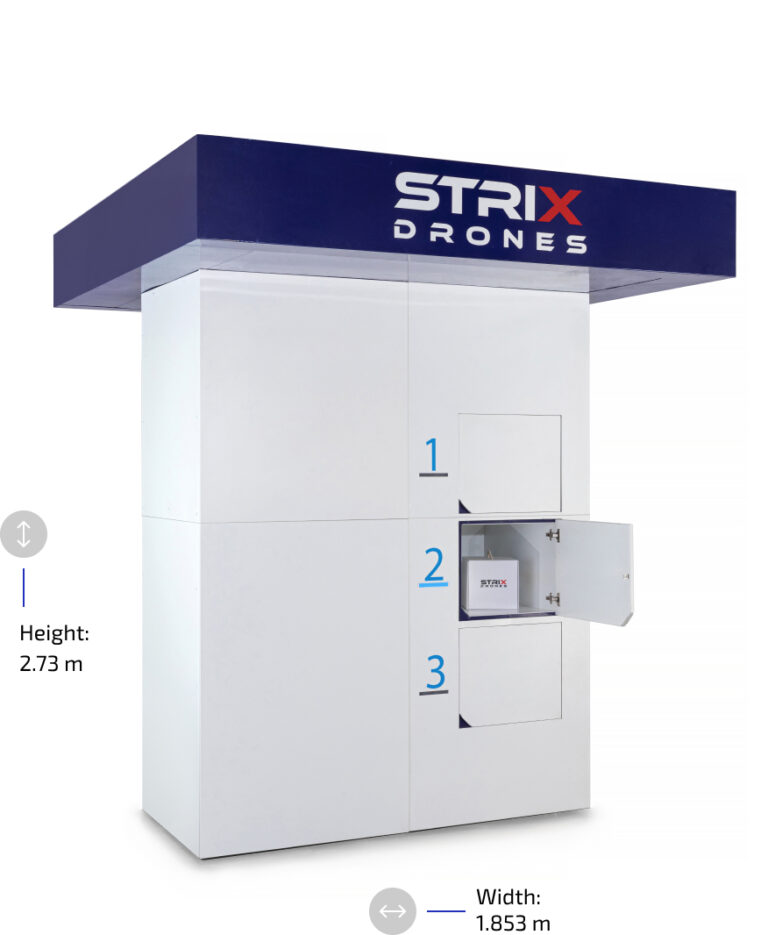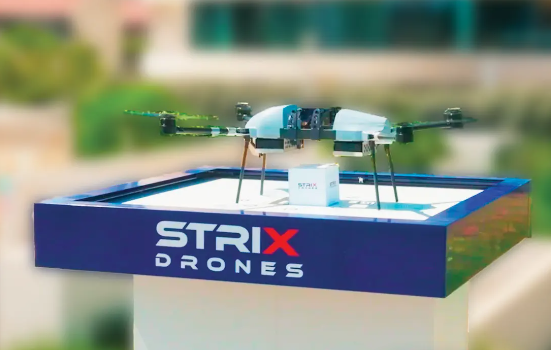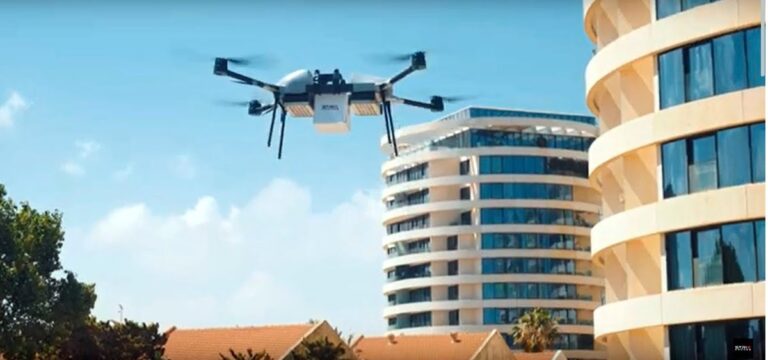
Background
The rapid development of drone technology has significantly transformed various industries, including security and surveillance. One of the most notable advancements is the capability of drones to operate Beyond Visual Line of Sight (BVLOS). This capability allows drones to fly beyond the operator’s line of sight, enabling long-range operations that were previously not possible. BVLOS technology has become a preferred method for prison inspections due to its ability to cover large areas such as prisons both efficiently and effectively.
The Rise of BVLOS Drones
BVLOS drones have gained popularity as regulations have eased and technology has advanced. These drones are equipped with advanced navigation and obstacle avoidance systems, allowing them to perform complex tasks such as infrastructure inspections, search and rescue missions, and security surveillance over extended distances[4][5]. The Federal Aviation Administration (FAA) has been working to expand BVLOS operations, recognizing their potential to revolutionize commercial and public safety applications[1][5].
BVLOS Drones in Prison Security
In the context of prison security, BVLOS drones offer several advantages:
- Enhanced Surveillance: BVLOS drones can patrol extensive prison perimeters without the need for human intervention, providing continuous monitoring and reducing the risk of security breaches[3].
- Rapid Response: These drones can quickly respond to potential threats or suspicious activities, relaying real-time data to security personnel for immediate action[3].
- Cost Efficiency: By reducing the need for extensive human patrols and stationary surveillance equipment, BVLOS drones can lower operational costs while maintaining high security standards[4].
- Risk Mitigation: Redundancy and avoiding the “Single – point – of – failure”
Case Study 1 – The Nevada Prison
The Nevada prison project represents a significant shift in how correctional facilities are addressing security and staffing challenges through the use of drone technology. This initiative is driven by severe staffing shortages and the need for innovative solutions to maintain security and operational efficiency in the state’s prisons.
Background and Motivation
Nevada has been facing extreme staffing shortages in its prison system, exacerbated by factors such as low pay, difficult working conditions, and the impact of the COVID-19 pandemic. These challenges have led to a high vacancy rate among corrections officers, making it difficult to maintain adequate security and services within the facilities. In response, Nevada is exploring the deployment of drones to patrol prison perimeters and assist with various security functions.
The “Overwatch” Platform
The proposed drone-based security system, known as “Overwatch,” aims to create a central command center where a single operator can monitor live video feeds from drones patrolling the prison perimeter. This system is designed to “fill in the blanks” where human staffing is insufficient, allowing for rapid response to emergencies and potential escape attempts.
Implementation and Challenges
Nevada prison officials have already begun moving forward with purchasing some of the necessary equipment for the drone system. However, there are concerns about the lack of detailed cost estimates and the need for legislative approval for any budget increases. The project underscores the urgent need for new approaches to prison security, given the national trend of staffing shortages in correctional facilities
Summary
The implementation of BVLOS drones in Nevada’s correctional facilities has demonstrated their effectiveness in enhancing perimeter security. These drones are equipped with AI and thermal imaging, allowing for rapid threat detection and response[3].
Case Study 2 – Countering the Smuggling Problem
The use of drones for smuggling contraband into prisons has become a significant concern.
Background and Motivation
Sentrycs’ integrated counter-drone technology is designed to increase prison security by detecting and tracking drones, locating their operators, and mitigating potential threats. The system operates autonomously, providing a 24/7 solution that does not require real-time decision-making when drones enter the no-fly-zone perimeter defined by the prison.
Implementation and Challenges
This technology can be seamlessly integrated with existing security systems, enhancing the overall security infrastructure of correctional facilitiesSentrycs Technology has developed a sophisticated counter-drone solution that addresses the growing threat of unauthorized drone activities, particularly in sensitive environments such as prisons, military bases, and critical infrastructure. Their technology is designed to detect, track, identify, and mitigate unauthorized drones, providing a comprehensive solution to enhance security and operational efficiency.
Overview of Sentrycs Technology
Sentrycs is a leader in adaptive counter-drone solutions, utilizing innovative cyber-based radio frequency (RF) technology. The company’s systems are capable of passively detecting drones, tracking their movements, identifying their model and serial number, and distinguishing between friendly and hostile drones. Once a drone is classified as a threat, the system can neutralize it by safely landing it in a predefined zone or sending it back to its home location.
Cost Analysis & Remaining Challenges
Cost Savigns Considerations
The deployment of BVLOS drones in prison security can lead to significant cost savings:
- Labor Costs: The automation of surveillance tasks reduces the need for human resources, leading to lower labor costs[4].
- Maintenance and Equipment: Although the initial investment in drone technology can be high, the long-term savings on maintenance and equipment replacement are ubstantial[4].
- Counter-Drone Solutions: Implementing counter-drone technologies can prevent costly incidents related to contraband smuggling, reducing the financial impact of security breaches[3].
The Remaining Regulatory Challenges
- Regulatory Approvals: Operating BVLOS drones requires specific waivers or approvals from aviation authorities like the FAA. The process to obtain these approvals can be lengthy and complex, often requiring detailed safety cases and risk assessments. Some of such approvals may be waived for Prisons due to the reduced risks associated with flying over restricted areas.
- Safety and Compliance: Ensuring compliance with safety regulations is crucial, as BVLOS operations increase the risk of mid-air collisions due to the pilot’s inability to see the drone directly. This necessitates the use of visual observers or advanced detect-and-avoid technology.
Technical Challenges
- Obstacle Avoidance: BVLOS drones must be equipped with reliable obstacle avoidance systems to prevent collisions with structures or other aircraft. This is particularly important in the complex environments around prisons, where obstacles can be numerous and unpredictable.
- Data Management: Managing the large volumes of data collected during BVLOS operations can be challenging. Drones often need to swap out storage media like SD cards during long missions, which can disrupt operations. Additionally, there is a risk of data loss if storage media becomes corrupted.
- Long-Range Communication: Maintaining a stable communication link over long distances is critical for BVLOS operations. This requires robust datalink technology to ensure continuous control and data transmission between the drone and the operator.
Operational Challenges
- Training and Education: BVLOS operations are more complex than standard drone flights, requiring specialized training for operators. Pilots must be well-versed in handling drones beyond their line of sight, which includes understanding advanced navigation and emergency procedures.
- Integration with Existing Systems: Integrating BVLOS drones into existing prison security systems can be complex. It requires careful planning to ensure that drones complement other surveillance technologies and that data is seamlessly integrated into command and control systems.
Summary
Despite the challenges above mentioned, BVLOS drone operations can offer significant advantages for prison inspections, such as enhanced surveillance capabilities and cost efficiencies. Addressing these challenges through technological advancements and regulatory support will be key to maximizing the potential of BVLOS drones in correctional facilities.
Overall, the integration of BVLOS drones into prison security systems offers a modern, efficient, and cost-effective solution to the challenges of maintaining secure correctional facilities. As technology continues to advance, the role of drones in enhancing security and operational efficiency is expected to grow further.
About Strix Drones Ltd. – Strix Drones Solutions for Area Inspection
Strix Drones offers solutions that can be highly beneficial for area inspection in prisons, leveraging their advanced drone docking technology and autonomous systems.
- Universal Drone Docking Stations: Strix Drones provides universal and autonomous docking stations that can integrate with any drone, allowing for continuous operations without manual intervention. This is particularly useful for prisons, where drones can be used to conduct regular surveillance and inspections around the perimeter and within the facility itself. The docking stations enable drones to land, recharge, and download data autonomously, ensuring they are always ready for deployment.
- Automated Inspection Capabilities: The Strix Drones technology supports automated inspection processes, which can enhance security in prisons by providing real-time monitoring and rapid response capabilities. Drones equipped with cameras and sensors can patrol the prison grounds, detect unusual activities, and provide live feeds to security personnel.
- Secure and Efficient Operations: The docking stations are designed to provide secure storage and rapid data offload, which is crucial for maintaining the integrity of surveillance operations in a prison environment. The systems are weather-protected and offer centralized management, making them suitable for the demanding conditions of prison security.
- Military-Grade Reliability: Strix Drones’ solutions are battle-tested and have proven reliability in challenging environments. This robustness ensures that the technology can withstand the rigorous demands of prison security operations, providing a dependable tool for maintaining safety and order.
Contact Strix:
United States Office
- Address: 11125 Yankee St A, Dayton, OH 45458, United States
- Email: [email protected]
- Phone: (301) 633-2006
Israel Office
- Address: Hanagar Street 6, Hod Hasharon, Israel
- Email: [email protected]
- Phone: +972 546218712
Citations:
[1] https://uavcoach.com/drone-news-roundup-bvlos-rule/
[2] https://scopito.com/bvlos-long-range-drone-inspection-operations/
[3] https://sentrycs.com/the-counter-drone-blog/drone-protection-for-prisons/
[4] https://www.airsight.com/remote-id-and-bvlos-uas-operations
Authored by @IanSorek, Head of Business Development






